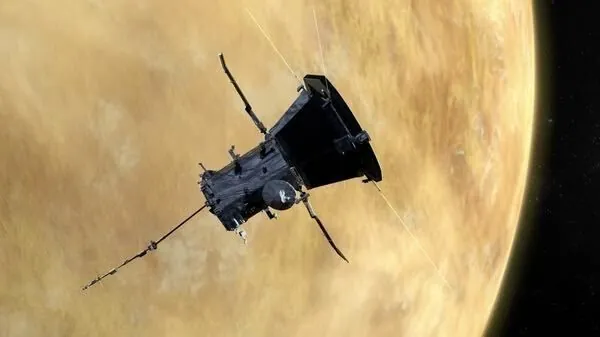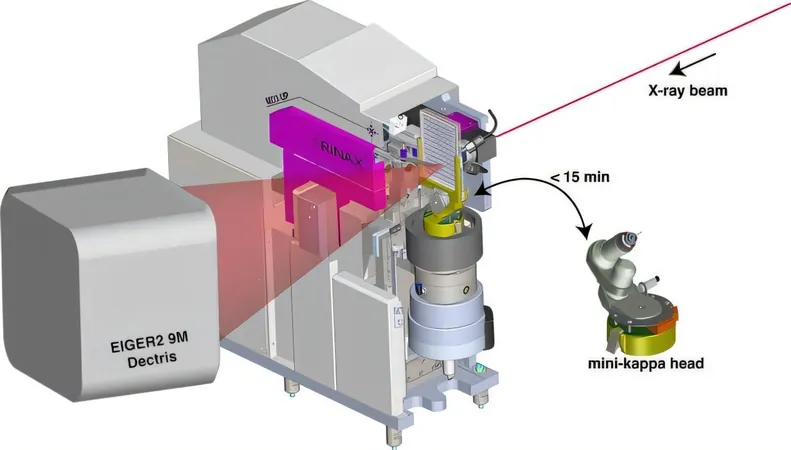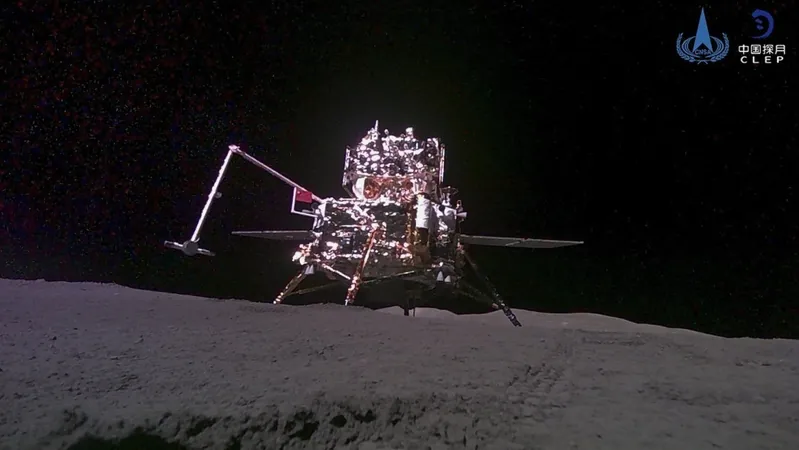
Parker Solar Probe to Make Historic Pass by Venus Before Daring Sun Encounter
2024-11-06
Author: Charlotte
Introduction
In an exciting milestone for space exploration, NASA's Parker Solar Probe is set to complete its seventh flyby of Venus today. This critical maneuver will position the spacecraft on a trajectory that brings it within an astonishing 3.8 million miles of the sun's surface – an unparalleled achievement in human history, marking the closest any man-made object has ever traveled to our star.
Significance of the Mission
Renowned astrophysicist Nour Raouafi from Johns Hopkins University Applied Physics Laboratory highlighted the significance of this mission, likening it to the monumental moon landing of 1969. "We are basically almost landing on a star," he remarked, emphasizing the groundbreaking nature of this achievement.
Overview of the Parker Solar Probe
Launched in 2018, the Parker Solar Probe, roughly the size of a small car, embarked on an audacious mission to ‘touch’ the sun and unravel its many mysteries. One of the probe's primary objectives is to understand why the sun's corona, the outermost layer of its atmosphere, exhibits temperatures hundreds of times hotter than the sun's surface. The probe has already started to provide insights into these puzzling phenomena.
Gravitational Maneuvers
The gravitational pull from Venus has been instrumental in helping the Parker Solar Probe reduce its orbital energy, allowing it to spiral in closer to the sun with every pass. Yanping Guo, mission design and navigation manager, stated, "Venus 7 is the critical gravity assist for Parker Solar Probe to eventually achieve its minimum solar distance."
Scientific Discoveries about Venus
But this mission is not just about the sun — the probe's encounters with Venus are yielding unexpected scientific data. The Parker Solar Probe's instruments were activated during previous flybys, revealing new insights into Venus itself, often dubbed “Earth’s evil twin.” In its third flyby in July 2020, the probe's Wide-Field Imager (WISPR) managed to capture images penetrating the thick clouds of Venus, exposing distinct surface features such as plains and plateaus.
Heat Flow Observations
In a fascinating twist, WISPR also documented heat flow from Venus' nightside, with temperatures surpassing 860 degrees Fahrenheit (460 degrees Celsius) — hot enough to melt metal. The images indicated brighter areas not previously observed, hinting at potential chemical variations on the surface, possibly from recent volcanic activity.
Future Exploration Plans
With another flyby scheduled for today, Parker's operators plan to further explore Venus to glean more details about its surface characteristics. Noam Izenberg, a planetary geologist, suggested that this flyby could provide essential context to differentiate physical and chemical properties of Venus’ surface.
Looking Ahead to the Sun Encounter
As the Parker Solar Probe prepares for its record-breaking approach to the sun this Christmas Eve, traveling at a breathtaking speed of 430,000 miles per hour (692,010 kilometers per hour), the mission team at NASA will be eagerly awaiting the probe's return signal three days later, ensuring that this historic encounter is a success. Stay tuned as humanity inches closer to unlocking the celestial secrets of our solar system!









 Brasil (PT)
Brasil (PT)
 Canada (EN)
Canada (EN)
 Chile (ES)
Chile (ES)
 España (ES)
España (ES)
 France (FR)
France (FR)
 Hong Kong (EN)
Hong Kong (EN)
 Italia (IT)
Italia (IT)
 日本 (JA)
日本 (JA)
 Magyarország (HU)
Magyarország (HU)
 Norge (NO)
Norge (NO)
 Polska (PL)
Polska (PL)
 Schweiz (DE)
Schweiz (DE)
 Singapore (EN)
Singapore (EN)
 Sverige (SV)
Sverige (SV)
 Suomi (FI)
Suomi (FI)
 Türkiye (TR)
Türkiye (TR)